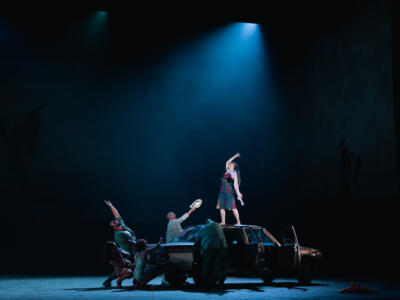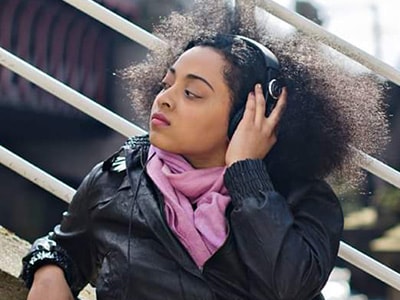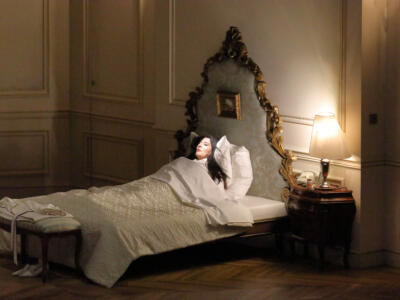The beginner’s guide to Maria Callas
Greek soprano, Maria Callas, (born New York, 2 December 1923; died Paris, 16 September 1977) was one of the most iconic opera singers of the 20th century.
She enjoyed unequalled artistic pre-eminence, musical instincts and intelligence; especially in the core 19th-century Italian opera (from Rossini to Puccini) in which she excelled. Callas possessed a natural authority on stage. Her voice – at least for a decade in the 1950s – was impressive albeit individual in quality. Vocally, she was agile. She was able to deliver a wide range of vocal colours depending on the mood or type of music she was singing.
Continue reading as we delve into the often colourful life of Maria Callas; explore some of her most famous songs and stage roles and consider her legacy.
The life of Maria Callas
In this section, we’ll look at Maria Callas’s upbringing during wartime Greece, her career highlights – including high-profile performances in both Europe and America, and her incredible 1965 performance in the title role of Tosca – and her legacy and personal life off-stage.
Early life and education
Though American by birth (her Greek parents had emigrated to the USA in the year of Maria’s birth), Callas left the USA for Athens in 1937 (aged 13) when her mother became fed up with her husband’s cheating.
In Greece, the young Maria Callas began her musical education at the age of 13. Her first vocal training was undertaken by Maria Trivella at the Greek National Conservatory. Callas’s then lower contralto voice raised and lightened to that of a soprano.
Video
Aged 18, Callas made her professional operatic debut as Puccini’s Tosca in Athens in August 1942. This was a role with which she was associated throughout her career. Two years later, she played Santuzza (in Mascagni’s Cavalleria rusticana) and Leonore (in Beethoven’s Fidelio).
Video
Video
Career highlights
Callas launched her post-war career by singing Ponchielli’s La Gioconda in Verona under leading Italian conductor, Tullio Serafin.
She was soon in demand all over Italy, often singing “heavier” soprano roles such as Verdi’s Aida and Wagner’s (Tristan and Isolde), Kundry (Parsifal) and even Brünnhilde from The Valkyrie.
Serafin became a mentor to her, and he steered her away from heavier roles towards earlier, lighter-voiced Italian works. These included Bellini (I Puritani and Norma), Donizetti (Lucia di Lammermoor and Anna Bolena), Verdi’s Violetta (La traviata) and Leonora (Il trovatore), Desdemona (Otello) which includes the beautiful “Ave Maria” from Act 4 and Gilda (Rigoletto), and Puccini’s Tosca, Madame Butterfly and Gianni Schicchi which includes the famous aria “O mio babbino caro”.
Callas also performed many rare and challenging ‘bel canto’ operas including Gluck’s Alceste, Cherubini’s Médée and Spontini’s La vestale.
Video
She made triumphant appearances at the world’s most notable opera houses throughout the 1950s. She sung at La Scala, Milan; Covent Garden, London; the Lyric Theatre of Chicago; and the Metropolitan Opera, New York.
Her high-profile appearances were not without their own dramas off-stage. Callas fell out spectacularly with the Met Opera’s General Manager, Rudolf Bing. She also had well-known rivalry with the other leading international soprano of the period, Renata Tebaldi.
Always her own fiercest critic, her exacting high standards and stringent demands on herself sometimes meant she would prefer to withdraw from an engagement, rather than sing below par and disappoint her public – despite any contractual consequences.
Video
Even in the 1950s, when Callas was at the height of her career and commanded the highest fees, vocal problems were becoming evident. These included an unevenness in her vocal registers and a pronounced tremolo on high notes.
Some have argued that a noticeable loss of weight around 1953/54 were the cause of these vocal difficulties, or that her training was inadequate.
Video
To be sure, there were problems. But anyone who listens to two of Maria Callas’s greatest roles – ‘Casta diva’ from Bellini’s Norma and Tosca from 1965 (the only existing footage of a Callas role) – cannot fail to be moved by the expressive power of her acting and singing in combination.
Video
In the 1960s, Callas withdrew from the operatic stage more and more, probably because of the problems with her voice, but also because of changes in her personal life.
She made her final operatic appearances in July 1965, in Tosca at Covent Garden. She was only 41 years old, an age when most sopranos are at their peak.
Video
Later life and legacy
In the late 1950s, Maria Callas began an affair with the Greek shipping magnate, Aristotle Onassis, while she was still married to her husband, Giovanni Battista Meneghini.
This affair relationship received much publicity at the time, and even after Onassis married Jacqueline Kennedy (widow of President John F. Kennedy) he continued to meet frequently with Callas.
It has been argued that Callas saw the affair with Onassis, which she might have hoped lead to marriage, as a way out of a career in crisis.
Video
After Onassis abandoned her for good, Callas attempted to revive her career by giving masterclasses at the Juilliard School in New York. She also embarked on an international series of joint recitals in 1973/4 with Giuseppe di Stefano, the tenor with whom she had performed often in her heyday.
These sold-out recitals were artistically flawed – both singers were past their sell-by-date – however, they proved hugely popular with the public, who had never forgotten the Callas magic.
After the final recital in November 1974, Callas withdrew from public life and lived alone in her Paris apartment, seeing virtually no one.
Video
In September 1977, she suffered a heart attack which was her unfortunate cause of death. Her remains were cremated, and her ashes placed in the Père Lachaise Cemetery.
After being stolen and later recovered, her ashes were scattered over the Aegean Sea, according to her wish, in the spring of 1979.
Even from beyond the grave, Maria Callas seemed to be playing out a drama worthy of the operatic stage.
Over a century on from her birth, the fascination with Maria Callas as an artist and as a woman shows no sign of abating.
She has been the subject of biographies and film documentaries, including ‘Maria by Callas’ (2018) directed by Tom Volf and ‘Maria’ (2024) directed by Pablo Larraín, her many recordings (official and pirated) sell in vast numbers, and she is the focus of stage plays and operatic events such as Marina Abramović’s 7 Deaths of Maria Callas, which played in the UK for the first time as part of the English National Opera’s 2023/24 Season.
Video
FAQ's
What nationality was Maria Callas?
Maria Callas’s family was Greek however she herself was born in New York in 1923. When Callas was 13, she moved back to Athens with her mother, and this is where she began her musical training.
How tall was Maria Callas?
Maria Callas was 5’ 8.5” tall.
Who taught Maria Callas to sing?
Maria Callas’s first vocal training was with Maria Trivella at the Greek National Conservatory, which is where her voice was trained to a soprano. She later studied at the Athens Conservatory under soprano, Elvira de Hidalgo.
What is the most famous Maria Callas performance?
Maria Callas’s performance in the title role of Tosca in 1953 is widely thought to be her most famous performance and is further considered to be one of the most famous opera recordings of all time.
It was during 1950—1955 that her voice was thought to be at its best. Her role as Tosca bookended her career, performing it first in 1942 in Greece and then at the very end of her career in London in 1964.
Who was Maria Callas married to?
Maria Callas was married to Giovanni Battista Meneghini, an Italian entrepreneur. However, he assumed control of her career and, as a result, stole a large portion of her wealth. The marriage dissolved in 1959.
While still married, she began an affair with Greek shipping magnate, Aristotle Onassis, who later went on to marry Jackie Kennedy.



